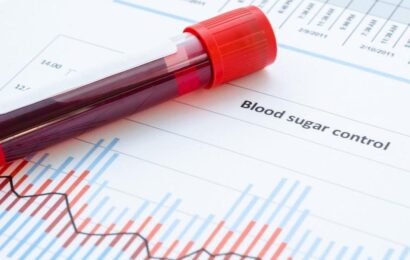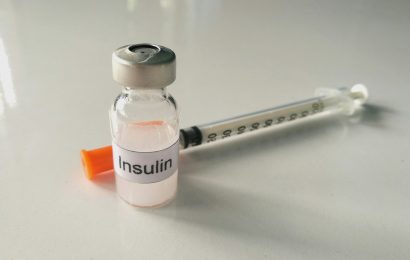“I scream, you scream, we all scream for ice cream!” These are famous lyrics from a song recorded in the 1920s. Ninety years later, they still ring true. Ice cream is the most popular dessert in America, and the U.S. ranks number two of the top five “ice cream consuming countries” in the world, according to the website icecream.com. And while ice cream is a cool, creamy concoction for those dog days of summer, many people eat this frozen delectable year round.
Ice cream’s creamy goodness comes at a price (of course): it’s full of fat, sugar, and, of course, calories. For people who have diabetes or who are watching their weight, ice cream doesn’t exactly fit into a healthful eating plan, although it’s certainly fine to enjoy it as an occasional treat. But not so fast — there’s a slew of lower-calorie ice creams that have recently hit the frozen food cases in supermarkets. What are they all about? And can you finally indulge without guilt?
What are lower-calorie ice creams?
Do a quick Google search, and you’ll be amazed at how many brands of lower-calorie ice creams have hit the frozen food scene. Not only are they lower in calories than regular ice cream, but many of these ice creams are dairy-free, soy-free, gluten-free, nut-free, low sugar, low carb, and/or organic. And many brands are higher in protein than regular ice cream, as well. There’s pretty much something for everyone. Although, it does leave one wondering…what exactly is in these products? The ingredients of these frozen desserts vary from brand to brand, of course. Some of them aren’t even “legally” ice cream: The FDA defines ice cream as a frozen mixture made from dairy products that contain at least 10% milkfat. Let’s take a look at three of these lower-calorie “ice creams” and see what’s inside.
Halo Top
“Finally, healthy ice cream,” proclaims Halo Top’s website. With 24 flavors to choose from, this could be a dream for any ice-cream lover, especially one who has diabetes…right? Halo Top is the top-selling ice cream pint in grocery stores right now. Its sweetness comes from two sweeteners: stevia and erythritol. Stevia leaf extract is found in the nonnutritive sweeteners PureVia and Truvia. Stevia itself is an herb that has been used for centuries as a sweetener. Erythritol is a sugar alcohol, which is a sweetener that is only partially digested. Erythritol is touted as causing fewer side effects such as uncomfortable bloating, cramps, and even diarrhea, compared to other sugar alcohols, such as sorbitol and mannitol. Sounds pretty good, right? And Halo Top even tells you it’s OK if you eat the entire pint in one sitting.
What’s inside: Per the Nutrition Facts label, a serving is 1/2 cup, and, depending on the flavor, contains 60–90 calories, 12–19 grams of carb, 2–4 grams of fat, and 5–7 grams of protein (equal to about 1 ounce of protein). In addition to stevia and erythritol, you’ll find guar gum, carob gum, soybean oil, rice flour, eggs, and cane sugar. Halo Top isn’t dairy-free. Don’t be surprised if Halo Top leaves an aftertaste in your mouth.
Bottom line: Can you really eat a whole pint of Halo Top? No one is stopping you, certainly. But a pint will set you back between 240 and 360 calories, for one thing, and 48 to 76 grams of carb. While erythritol does not have the same glycemic impact as nutritive sweeteners (e.g., sugar), some people do suffer digestive woes from this sugar alcohol, as well as headaches. And recent research hints that erythritol is possibly linked with an increase in belly fat. Go ahead and give this a try, if you’re curious, but remember that portion size still matters.
Enlightened
“This is the high protein ice cream you’ve been looking for,” the website states. The question is: have you been looking for a high-protein ice cream in the first place? Nutrition-wise, Enlightened is along the same lines as Halo Top. (Alas, there are only 22 flavors to choose from). This frozen dessert also contains erythritol, but instead of stevia, it uses monk fruit extract, a nonnutritive sweetener that’s about 200 times sweeter than sugar, but has not been well-studied in terms of health effects. However, the company’s website claims that its ice cream has a low glycemic index. And, like Halo Top, the company brags that you can eat the whole pint.
What’s inside: Per the Nutrition Facts label, 1/2 cup contains (depending on the flavor), 60–100 calories, 13–19 grams of carb, 1.5–6 grams of fat, and 6–8 grams of protein. Erythritol and monk fruit extract aside, you’ll find ingredients such as cane sugar, carob gum, guar gum, non-GMO soluble corn fiber, vegetable glycerin, skim milk, and milk protein isolate in Enlightened. Not dairy free, but some flavors are gluten-free.
Bottom line: Enlightened is very similar to Halo Top. Sure, it’s a lower-calorie option compared to Häagen-Daz or Ben & Jerry’s, but it’s not a free food, and calories still count. Eating a whole pint at one time doesn’t exactly constitute a healthful eating practice. The erythritol might give you a stomachache, as well.
Breyers Delights
“It will leave your taste buds in disbelief with each yummy spoonful.” Breyers Delights uses real vanilla bean, real cocoa, and real peppermint extract, which is a relief. Sadly, this high-protein ice cream is only available in four flavors. But, the company more than makes up for the meager selection by packing it with 20 grams of protein — IF you eat the entire pint, that is. Don’t think that a single serving is going to help you build muscle. And you’ll consume between 260 and 330 calories per pint, as well. Breyers Delights follows suit with Halo Top in its choice of sweeteners: erythritol and Reb A, which is a stevia leaf extract.
What’s inside: Trying to find the nutrition info for Breyers Delights on Breyers’ website is extremely frustrating. Suffice it to say that a 2/3-cup serving of the vanilla flavor contains 90 calories, 21 grams of carb, 2.5 grams of fat, and 7 grams of protein. Most of the ingredients mirror those found in Halo Top: vegetable gums, soluble corn fiber, milk protein concentrate, skim milk, and various flavorings. Obviously, Breyers Delights are not dairy-free. Some may be gluten-free, but of course, always read the ingredient list and check with the manufacturer.
Bottom line: Breyers has entered its lower-calorie ice cream into the ring to contend with other brands. All of the marketing around this treat may have you believing that it’s much higher in protein than its contenders, but it’s not.
So, are these lower-calorie ice creams the real deal? It depends. They certainly are an option for people who have diabetes and/or who are weight conscious. But, keep in mind that erythritol can cause side effects in some people. And these ice creams aren’t carb-free. The best way to find out if and how they affect your blood sugar (should you choose to indulge) is to check your blood sugar about two hours after you eat them. Polishing off an entire pint at one time isn’t going to do much in the way of setting up healthy eating habits. Plus, given the reviews of these ice creams, they aren’t as likely to leave you feeling satisfied, and the possible aftertaste may be a turn-off. Oh, and be prepared to dish out roughly $5.00 per pint. These frozen desserts don’t come cheap. Perhaps a small portion of “real” ice cream will better satisfy your sweet tooth. The choice is yours!
Want to learn more about ice cream and diabetes? Read “Going to the Grocery Store With Diabetes: The Ice Cream and Frozen Novelty Aisle” “Stocking Your Healthful Freezer: Frozen Treats: Ice Cream Sandwiches” and “Frozen Treats: Ice Cream Bars.”





